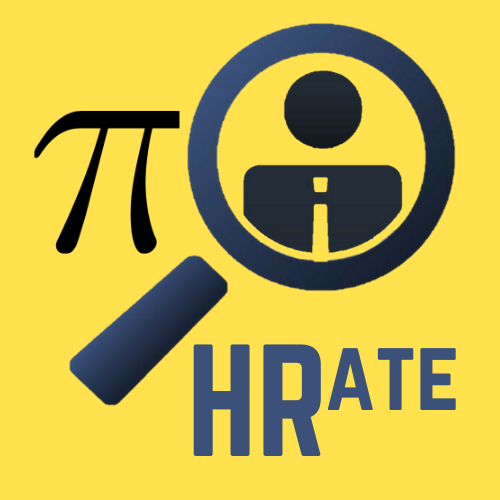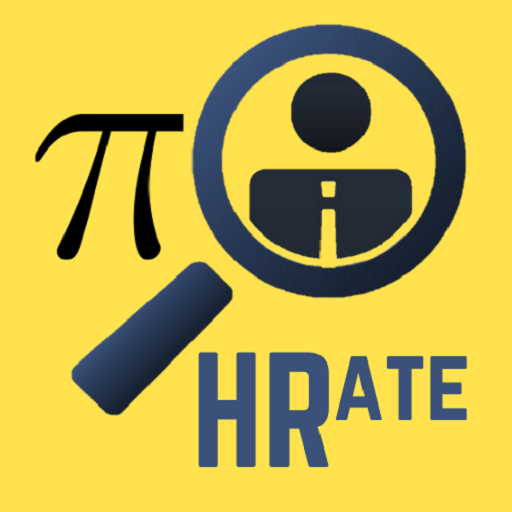Revolutionizing Recruitment: The Impact of Gen AI on Streamlining Tasks

In the ever-evolving landscape of talent acquisition, Gen AI emerges as a game-changer, revolutionizing the way recruiters perform tasks. This advanced technology brings unparalleled efficiency to the recruitment process by automating communication, streamlining resume screening, and providing personalized candidate engagement. From crafting tailored responses to automating interview scheduling, Generative AI empowers recruiters to focus on strategic decision-making, fostering a more seamless and candidate-centric hiring experience. Stay ahead in the competitive realm of recruitment by embracing the transformative capabilities of Gen AI.
Recruiters utilize a combination of traditional methods, technology tools, and human expertise to perform their tasks effectively in the recruiting process. Here are some key elements that recruiters commonly rely on:
- Resume Screening Software:
- Recruiters often use resume screening software to manage the influx of resumes. These tools employed keyword matching and predefined criteria to filter resumes and identify candidates who closely matched job requirements.
- Applicant Tracking Systems (ATS):
- ATS systems are widely used to streamline the hiring process. These platforms helped recruiters manage candidate data, track application statuses, and collaborate with team members during the hiring process.
- Job Boards and Networking Platforms:
- Recruiters frequently utilize job boards (e.g., LinkedIn, Indeed) and professional networking platforms to source candidates. They actively engaged in candidate searching, networking, and building talent pipelines.
- Manual Screening and Interviewing:
- Recruiters conduct manual screening of resumes to assess candidate qualifications, skills, and experiences. Additionally, they conducted in-person or phone interviews to evaluate soft skills, cultural fit, and overall suitability for the role.
- Human Relationship Building:
- Building and maintaining relationships with candidates, hiring managers, and other stakeholders are crucial aspects of recruiting. This involves effective communication, understanding the needs of hiring managers and providing a positive candidate experience.
- Job Fairs and Networking Events:
- Recruiters attend job fairs and networking events to connect with potential candidates, promote the company’s brand, and identify talent. These events provide opportunities for face-to-face interactions and relationship building.
- Diversity and Inclusion Initiatives:
- To enhance diversity and inclusion efforts, recruiters engage in targeted outreach, attend diversity-focused events, and collaborate with organizations to attract diverse candidates.
- Industry Knowledge and Expertise:
- Recruiters rely on their industry knowledge and expertise to understand the specific skills and qualifications needed for various roles. This knowledge helps them assess candidate suitability and provide valuable insights to hiring managers.
- Legal and Compliance Knowledge:
- Recruiters need to stay informed about employment laws, regulations, and compliance requirements. This knowledge was crucial for ensuring fair and lawful recruitment practices.
While Generative AI has introduced advanced capabilities, the traditional methods and tools used by recruiters before its emergence played a vital role in managing the recruitment process efficiently and effectively, these practices often required a combination of technological tools, human judgment, and interpersonal skills to successfully identify and select the right candidates for a given role.
Gen AI vs. Parsers
Generative AI and parsers serve different purposes in the field of artificial intelligence, particularly in natural language processing. Here are the key differences between generative AI and parsers:
- Functionality:
- Generative AI: It is designed to generate new content or responses based on patterns learned during training. Generative AI, such as language models like GPT (Generative Pre-trained Transformer), can generate human-like text and responses in a wide range of contexts.
- Parsers: Parsers, on the other hand, are tools or systems that analyze and extract specific information from structured data, usually following predefined rules. In natural language processing, parsers are often used for tasks like syntactic analysis, named entity recognition, and information extraction.
- Task Handling:
- Generative AI: Excels in tasks that require understanding and generation of human-like text. It can be used for tasks such as language translation, text completion, and conversation generation.
- Parsers: Primarily used for structured data processing tasks, such as parsing documents or extracting specific information from predefined data formats like resumes or code.
- Learning Approach:
- Generative AI: Learns from large datasets using unsupervised learning and is capable of generalizing across various language tasks. It learns the distribution of language and can generate coherent and contextually relevant text.
- Parsers: Often rely on rule-based or supervised learning approaches, where the system is trained on labeled examples or predefined rules for specific tasks.
- Flexibility:
- Generative AI: Generally more flexible and adaptable to different tasks and contexts. It can handle a wide range of inputs and generate responses in a more natural language format.
- Parsers: More rigid and task-specific. They are designed for specific types of data and may require adjustments or retraining for different formats or tasks.
- Use Cases:
- Generative AI: Suitable for tasks such as chatbots, content generation, creative writing, and natural language understanding applications.
- Parsers: Commonly used for data extraction, information retrieval, and structured document analysis in fields like finance, legal, and human resources.
Table summarizing recruiting tasks that can be executed using both generative AI and parsers:
| Recruiting Task | Generative AI | Parsers |
| Resume Parsing | Generate personalized responses for candidates | Extract structured information from resumes |
| Job Description Analysis | Generate suggestions for job description | Analyze and extract key requirements from job descriptions |
| Candidate Matching | Generate personalized recommendations | Match candidate skills with job requirements |
| Interview Scheduling | Generate and send interview invitations | Extract and organize availability information for scheduling |
| Automated Screening Questions | Generate context-specific follow-up questions | Extract answers to predefined screening questions |
| Feedback Analysis | Generate summaries based on feedback | Analyze and extract structured feedback on candidates |
| Onboarding Documentation | Generate onboarding materials with welcome messages | Extract and organize information from new hire documentation |
| Diversity and Inclusion Analysis | Generate recommendations for improvement | Analyze applicant data to track diversity metrics |
This table highlights how both generative AI and parsers can complement each other in various recruiting tasks, combining the strengths of natural language understanding and structured data extraction for an enhanced recruiting process.
In summary, while generative AI focuses on generating human-like text and understanding context, parsers are specialized tools for structured data processing and information extraction. The choice between the two depends on the specific requirements of the task at hand, with generative AI being more suitable for natural language understanding and conversation, and parsers being more apt for structured data analysis.
Using Generative AI effectively for recruiting tasks
Using Generative AI effectively for recruiting tasks involves leveraging its capabilities in natural language understanding and generation to enhance various aspects of the recruiting process. Here are some tips on how to use Generative AI effectively in recruiting:
- Automated Responses:
- Use Generative AI to automate the generation of personalized responses to candidate emails, acknowledgment messages, and even initial screening questions.
- Ensure that the generated responses maintain a professional and friendly tone.
- Chatbot for Initial Queries:
- Implement a chatbot powered by Generative AI to handle initial queries from candidates.
- Allow the chatbot to provide information about the company, job openings, and application processes.
- Interview Scheduling:
- Utilize Generative AI to assist in interview scheduling by automatically generating and sending interview invitations.
- Allow candidates to interact with the system to propose suitable interview times.
- Customized Job Recommendations:
- Use Generative AI to analyze candidate profiles and generate personalized job recommendations based on their skills, experience, and preferences.
- Enhance the candidate experience by offering relevant job suggestions.
- Feedback Analysis:
- Implement Generative AI to analyze feedback from interviews or assessments.
- Generate summaries or reports that highlight key insights and areas for improvement.
- Onboarding Communication:
- Leverage Generative AI to automate onboarding communication, including the generation of welcome emails, orientation materials, and introductory messages.
- Ensure that the generated content aligns with the company’s culture and values.
- Diversity and Inclusion Efforts:
- Use Generative AI to analyze recruitment data and generate recommendations for improving diversity and inclusion efforts.
- Provide insights into areas where the recruitment process can be adjusted to promote diversity.
- Candidate Engagement:
- Implement chatbots or virtual assistants to engage with candidates throughout the recruitment process.
- Use Generative AI to respond to candidate queries, provide updates, and maintain ongoing communication.
- Training for Consistency:
- Train the Generative AI model on a dataset that reflects the company’s values and communication style.
- Ensure that the model understands and generates content consistent with the company’s messaging.
- Continuous Improvement:
- Regularly evaluate the performance of the Generative AI model and fine-tune it based on feedback and evolving recruitment needs.
- Monitor for any biases in generated content and take steps to address them.
Remember to strike a balance between automation and human touch. While Generative AI can automate many aspects of the recruiting process, human oversight is crucial to handle unique or sensitive situations. Additionally, it’s essential to stay updated on advancements in Generative AI technology to continually improve and adapt your recruiting processes.
Automated Responses
Leveraging Generative AI for automated responses is a key strategy in streamlining communication with candidates. By integrating a sophisticated language model, such as GPT, recruiters can automate the generation of personalized responses to candidate emails, inquiries, and initial screening questions. This not only accelerates response times but also ensures a consistent and professional tone across all interactions. The Generative AI system can be trained on historical communication data to understand the nuances of the company’s messaging style, enabling it to produce responses that align with the organization’s culture and values. Automated responses not only improve efficiency in managing candidate correspondence but also contribute to a positive candidate experience by providing timely and relevant information.
Example:
“Dear [Candidate Name],
Thank you for expressing interest in the [Job Title] position at [Company Name]. We appreciate your application and are currently reviewing it. Our team will carefully consider your qualifications and reach out to you should your profile match our requirements. In the meantime, feel free to explore more about our company and culture on our website. We look forward to the possibility of working together.
Best regards,
[Your Company] Recruitment Team”*Best Practices:
To optimize the effectiveness of automated responses, it’s crucial to periodically review and update the Generative AI model, incorporating any changes in the company’s communication strategy. Additionally, integrating the system with contextual cues, such as specific job titles or candidate experiences, can enhance the personalization of responses. Regular monitoring for accuracy and relevance is essential to ensure that the automated responses align with the evolving needs of the recruitment process. Ultimately, by judiciously applying Generative AI to automate responses, recruiters can focus more on strategic aspects of the hiring process while providing candidates with a seamless and engaging experience.
Chatbot for Initial Queries
Integrating a chatbot powered by Generative AI into the recruitment process serves as a dynamic and efficient solution for handling initial queries from candidates. This technology allows candidates to engage in real-time conversations, receiving instant responses to questions about job openings, application procedures, and basic company information. The chatbot, driven by Generative AI, is capable of understanding the natural language intricacies of candidate queries, providing relevant and coherent responses. By offering this initial point of contact, the chatbot not only ensures that candidates receive prompt and accurate information but also frees up valuable human resources, allowing recruiters to focus on more complex aspects of candidate engagement.
Example:
Candidate: “Can you provide more details about the benefits offered at your company?”
Chatbot: “Certainly! At [Company Name], we offer a comprehensive benefits package that includes health insurance, retirement plans, and flexible work arrangements. Our commitment to employee well-being extends to various wellness programs and professional development opportunities. If you have specific questions or would like more detailed information, feel free to let me know!”
Implementation Strategies:
To effectively deploy a chatbot for initial queries, it’s essential to train the Generative AI model on a diverse dataset that includes common candidate inquiries. The chatbot should be programmed to recognize and appropriately respond to variations in language and context. Furthermore, regular updates to the chatbot’s knowledge base ensure that it remains current with changes in company policies, job listings, and frequently asked questions. By customizing the chatbot’s responses to reflect the unique characteristics and values of the organization, recruiters can create a seamless and informative first point of contact for candidates, setting a positive tone for their overall recruitment experience.
Interview Scheduling
The integration of Generative AI in the interview scheduling process introduces a level of automation that significantly streamlines this crucial aspect of recruitment. The system can be designed to analyze candidate availability and generate interview invitations, including details such as date, time, and location. By automating the coordination of interview logistics, recruiters can reduce scheduling conflicts, minimize delays, and enhance overall efficiency. The use of Generative AI in interview scheduling not only saves time for both candidates and recruiters but also contributes to a smoother and more positive candidate experience.
Example:
Automated Interview Invitation:
“Dear [Candidate Name],
Congratulations! We are pleased to invite you for an interview for the [Job Title] position at [Company Name]. The interview is scheduled for [Date] at [Time] at our [Office Location]. Please confirm your availability, and if this time is not suitable, let us know so we can make alternative arrangements. We look forward to meeting you and discussing your potential contribution to our team.
Best regards,
[Your Company] Recruitment Team”*Implementation Strategies:
To effectively implement Generative AI in interview scheduling, it’s essential to integrate the system with the company’s calendar and communication tools. The model should be trained to understand and respect variations in time zones, specific interview formats (in-person, virtual, or phone interviews), and any company-specific protocols. Regularly updating the system with real-time scheduling information ensures that the generated invitations align with the current availability of interviewers and meeting spaces. This automation not only reduces the administrative burden on recruiters but also helps in creating a positive impression on candidates by providing a seamless and organized interview process.
Customized Job Recommendations
Harnessing the power of Generative AI for the generation of personalized job recommendations marks a significant advancement in tailoring the recruitment experience for candidates. The system can analyze candidate profiles, considering factors such as skills, experience, and preferences, to generate a curated list of job recommendations. By providing candidates with opportunities that closely align with their qualifications and aspirations, recruiters can enhance engagement and increase the likelihood of attracting top talent. This approach not only streamlines the candidate’s job search but also showcases the organization’s commitment to understanding individual career trajectories.
Example:
“Dear [Candidate Name],
We have identified several exciting opportunities at [Company Name] that align perfectly with your skills and experience. Based on your profile, we recommend exploring positions such as [Job Title 1], [Job Title 2], and [Job Title 3]. Click the links below to view detailed job descriptions. If you find a role that captures your interest, feel free to apply through our online portal. We value your expertise and believe you could make a meaningful contribution to our team.
Best regards,
[Your Company] Recruitment Team”*Implementation Strategies:
To effectively implement personalized job recommendations, it’s essential to train the Generative AI model on a diverse dataset that includes successful candidate placements and the evolving needs of the organization. The system should be programmed to consider not only technical skills but also soft skills and cultural fit. Additionally, incorporating feedback loops that allow candidates to provide input on the relevance of recommendations ensures continuous improvement. By refining the model over time, recruiters can fine-tune the accuracy of job suggestions, contributing to a more targeted and candidate-centric recruitment strategy.
Automated Screening Questions
Integrating Generative AI for the generation and analysis of automated screening questions represents a strategic move towards enhancing the efficiency and depth of the initial candidate evaluation process. The system can be configured to not only extract answers to predefined screening questions but also to generate context-specific follow-up inquiries based on candidate responses. This dynamic interaction enables recruiters to gain deeper insights into a candidate’s skills, experiences, and suitability for the role. By automating the screening process, recruiters can focus their time and expertise on interpreting nuanced responses and making informed decisions.
Example:
Automated Screening Interaction:
Recruiter: “Can you share an example of a challenging project you’ve successfully managed in the past?”
Candidate: “Certainly! I led a cross-functional team in implementing [specific project]. We faced challenges with [details], but by implementing [strategy], we achieved [positive outcome].
Automated Follow-up Question: “That’s impressive! Can you elaborate on the specific strategies you employed to overcome those challenges and how they contributed to the project’s success?”
Implementation Strategies:
To effectively implement Generative AI for automated screening questions, recruiters should collaborate with subject matter experts to define relevant and insightful questions. The system should be trained on a comprehensive dataset that includes diverse responses to ensure adaptability to various candidate profiles. Careful consideration of ethical considerations, such as avoiding biased questions, is crucial to maintaining a fair and inclusive screening process. Regularly updating and refining the Generative AI model based on the success of screening outcomes ensures continuous improvement and alignment with evolving recruitment goals. Ultimately, the integration of automated screening questions not only accelerates the initial candidate assessment but also contributes to a more data-driven and informed decision-making process.
Feedback Analysis
Implementing Generative AI for feedback analysis revolutionizes the post-interview evaluation process, providing recruiters with valuable insights to inform hiring decisions. The system can be programmed to analyze feedback forms, interview notes, and assessments, extracting structured information about a candidate’s performance. Furthermore, the technology can generate comprehensive summaries or reports, highlighting key strengths and areas for improvement. By automating the feedback analysis, recruiters can streamline the decision-making process, identify patterns across candidate assessments, and maintain consistency in evaluating diverse candidates.
Example:
Generated Feedback Summary:
“Candidate [Name] demonstrated exceptional problem-solving skills and a strong understanding of [specific domain]. However, there were concerns raised about their communication style, particularly in articulating complex ideas. While their technical proficiency is commendable, additional support or training in effective communication may be beneficial for optimal collaboration within the team.”
Implementation Strategies:
To effectively implement Generative AI for feedback analysis, it’s crucial to train the model on a diverse set of feedback data that encompasses various roles and interview formats. Recruiters can collaborate with hiring managers and interviewers to define key evaluation criteria and ensure the system aligns with the company’s values and priorities. Regularly updating the model based on evolving feedback requirements and continuously refining its understanding of nuanced assessments contribute to the overall success of the automated feedback analysis process. This approach not only expedites the feedback loop but also allows for a more data-driven and objective evaluation of candidates, ultimately improving the quality of hiring decisions.




One Response
[…] the ever-evolving realm of recruitment, the collaboration between recruiters and AI tools exemplifies the synergy between innovation and experience, ultimately contributing to more […]